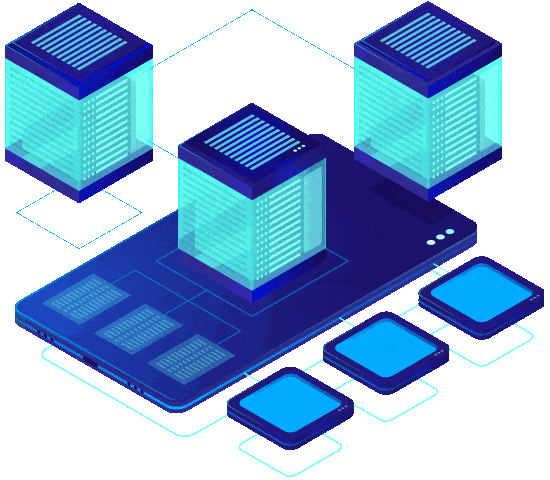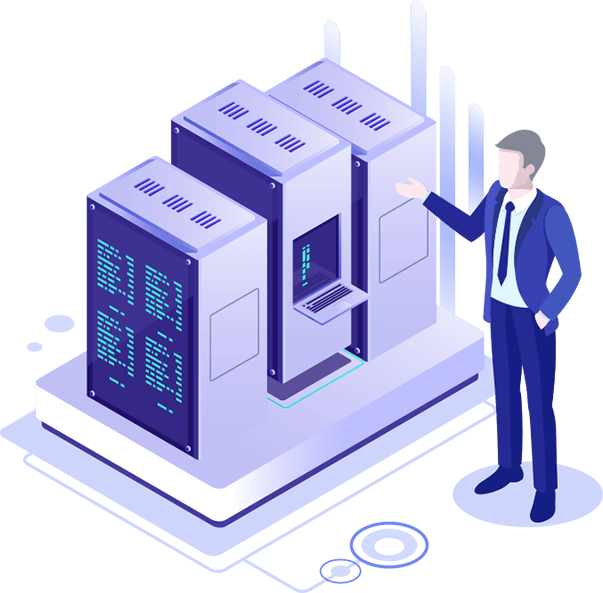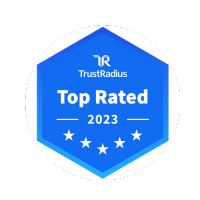Streamline Your Business with IT Support Services
Managed IT Support Services
panaTECH will help you efficiently manage your technology infrastructure, ensuring minimal downtime and maximum productivity. With the help of our experienced IT team, you can focus on your core operations while leaving the technical maintenance to us.


Let us manage your IT, while you manage your business
With panaTECH, you can focus on running your business while we handle your technology needs. From network monitoring and cybersecurity to software updates and hardware maintenance, our team of experts ensures your IT infrastructure runs smoothly and securely.
what can we do for you?
IT Infrastructure Management
A well-managed IT infrastructure is critical for an organization's success in today's digital age. It can help increase productivity, reduce costs, and improve customer satisfaction.

Cybersecurity and threat management
Our cybersecurity and threat management services provide the necessary tools and expertise to safeguard your sensitive data and networks from potential breaches and attacks.

Technical support and user management
Our technical support and user management services provide businesses with reliable and efficient solutions for managing their IT systems and ensuring seamless user experiences.

IT Consulting Services
Our IT consulting services offer tailored solutions and expert advice to help businesses optimize their technology infrastructure, increase efficiency, and stay ahead of the competition.

Procurement and Asset Management
Our procurement and asset management services streamline the IT acquisition process, while also ensuring effective asset management, cost savings, and compliance with industry standards.

Communication and Collaboration Services
Our technical support and user management services provide businesses with reliable and efficient solutions for managing their IT systems and ensuring seamless user experiences.
We serve a variety of industries
At panaTECH, we understand that different industries have unique technology needs and challenges. That’s why we offer customized IT solutions that are specifically tailored to the requirements of each industry we serve, helping businesses achieve their goals and thrive in their respective markets.
Why Choose panaTECH for Managed IT Services
panaTECH provides IT solutions designed to protect all your information, processes, and network access points. In addition, we implement both proactive and reactive strategies to prevent bad actors from compromising trust in your business or organization.



Stronger Together
By leveraging each other’s strengths, panaTECH and its vendor partners can provide better services and solutions to you.










Insights

Seamlessly Integrate Co-Managed IT with Your Current Team
If you have recently started a partnership to Integrate Co-Managed IT services with your business, congratulations! This decision can significantly enhance your IT capabilities and

Why Co-Managed IT Is the Best Decision for Your Business
IT is an integral part of any business today. It doesn’t matter if you are in an industry that seems to have nothing to do
What Our Clients Have to Say
10 out 10!
Questions And Answers
Managed services in IT encompass a wide range of solutions provided by a third-party company to maintain, monitor, and optimize an organization’s technology infrastructure. These services are typically offered on a subscription basis and allow businesses to focus on their core operations while outsourcing their IT needs. Some common components of managed IT services include:
1. Network management: Monitoring, maintenance, and optimization of the organization’s network infrastructure to ensure reliable connectivity and performance.
2. Server management: Remote administration of servers, including updates, security patches, monitoring, and troubleshooting.
3. Data backup and recovery: Regular data backups, disaster recovery planning, and data restoration in case of emergencies or data loss.
4. Endpoint security and management: Deployment and management of security solutions for devices such as PCs, laptops, and mobile devices, ensuring protection against threats.
5. Cybersecurity: Implementation and monitoring of comprehensive security measures to protect the organization’s IT infrastructure from external and internal threats.
6. Cloud services management: Administration and optimization of cloud-based applications, storage, and infrastructure.
7. IT helpdesk support: Providing end-users with technical assistance and support for hardware and software issues.
8. Software and hardware support: Management of hardware and software assets, including procurement, installation, updates, maintenance, and licensing.
9. Remote monitoring and management (RMM): Continuous monitoring of the IT environment to identify and resolve issues proactively.
10. Compliance and risk management: Ensuring that the organization’s IT infrastructure adheres to industry regulations and standards, and assisting with risk assessment and mitigation.
11. IT consulting and strategy: Providing guidance on technology trends, infrastructure planning, and digital transformation initiatives to align IT with business goals. These managed services can be tailored to meet the unique needs of an organization, providing a scalable and cost-effective solution for managing IT resources.
The cost of IT-managed services can vary significantly depending on several factors, such as the size of your organization, the complexity of your IT infrastructure, the services you require, and the service provider you choose. Here are a few pricing models commonly used by managed service providers (MSPs):
1. Per-user pricing: In this model, the MSP charges a fixed fee for each user, typically on a monthly basis. This fee covers all managed services for devices and software used by each user. Prices can range from $50 to $150 per user per month, depending on the services included.
2. Per-device pricing: The MSP charges a fixed fee for each device under management, such as servers, workstations, and network devices. Prices can range from $5 to $50 per device per month for workstations, and $100 to $250 per server per month, depending on the level of service.
3. Tiered pricing: This model offers different service tiers, with each tier providing a specific set of services at a fixed price. For example, a basic tier may include monitoring and patch management, while a higher tier may add security services, data backup, and IT consulting. Prices can vary widely, from $100 to $500 or more per month, depending on the selected tier and organization size.
4. Flat-fee pricing: Some MSPs offer all-inclusive, flat-fee pricing that covers a comprehensive range of services for a fixed monthly fee. This model provides predictable costs, but prices can range from a few hundred to several thousand dollars per month, depending on the size and complexity of your organization.
5 Customized pricing: In some cases, MSPs offer customized pricing based on the specific needs of your organization. This can include a combination of per-user, per-device, and flat-fee pricing, as well as any additional services you require. It is essential to carefully evaluate the services offered by each MSP and compare them to your organization’s needs to determine the most cost-effective solution. Be sure to request quotes from multiple providers and consider both the initial costs and the long-term value they can deliver to your organization.
Managed IT services provide numerous benefits to organizations, allowing them to focus on their core business operations while ensuring their technology infrastructure is well-maintained and secure. Some key benefits of managed IT services include:
1 Cost savings: Outsourcing IT management can help reduce expenses associated with hiring, training, and maintaining an in-house IT team. Managed services typically offer predictable pricing models, making it easier to budget and control IT costs.
2 Access to expertise: Managed service providers (MSPs) have a team of experienced IT professionals with a broad range of skills, enabling organizations to access specialized expertise that may not be available in-house.
3 Scalability: MSPs can help organizations scale their IT infrastructure as their business grows or evolves, ensuring that technology resources always align with business needs.
4 Proactive maintenance: Managed services enable proactive monitoring and maintenance of IT systems, which can help identify and resolve issues before they become critical, minimizing downtime and disruptions.
5 Enhanced security: MSPs implement robust security measures, including firewalls, antivirus software, and intrusion detection systems, to protect the organization’s data and IT infrastructure from cyber threats.
6 Compliance support: MSPs can assist organizations in meeting regulatory and industry-specific compliance requirements by providing guidance on best practices and implementing necessary security controls.
7. Improved efficiency: By outsourcing IT management, organizations can focus on their core business activities, leading to increased productivity and overall efficiency.
8. Faster issue resolution: MSPs typically offer round-the-clock support, ensuring that IT issues are resolved quickly and effectively, minimizing downtime, and maintaining business continuity.
9. Access to the latest technology: MSPs stay up-to-date with the latest technology advancements, ensuring that organizations have access to innovative solutions that can improve their IT infrastructure and operations.
10. Reduced Risk: By partnering with an MSP, organizations can mitigate the risks associated with IT management, including downtime, data loss, and security breaches. Overall, managed IT services offer organizations the opportunity to improve their technology infrastructure, enhance security, and increase efficiency, allowing them to focus on achieving their business goals.
Organizations opt to use IT-managed services for a variety of reasons, which often stem from the benefits these services provide. Here are some key reasons to use IT-managed services:
1 Focus on core business: By outsourcing IT management, organizations can concentrate on their core business activities and strategic objectives, rather than being distracted by day-to-day IT operations and maintenance.
2. Cost-effectiveness: IT-managed services can help reduce costs associated with hiring, training, and maintaining an in-house IT team. The predictable pricing models offered by managed service providers (MSPs) make it easier to budget and control IT expenses.
3. Access to specialized expertise: MSPs have a team of skilled IT professionals with a wide range of expertise, enabling organizations to tap into specialized knowledge that may not be available in-house.
4. Enhanced security and compliance: MSPs implement robust security measures to protect the organization’s IT infrastructure and data from cyber threats. They can also assist in meeting regulatory and industry-specific compliance requirements.
5 Proactive support and maintenance: MSPs proactively monitor and maintain IT systems, identifying and resolving issues before they escalate, which helps minimize downtime and disruptions.
6. Scalability: IT-managed services enable organizations to scale their IT infrastructure as their business grows or evolves, ensuring technology resources align with business needs.
7. 24/7 support: MSPs typically offer round-the-clock support, ensuring that IT issues are resolved quickly and effectively, maintaining business continuity.
8. Access to the latest technology: MSPs stay up-to-date with the latest technology advancements, giving organizations access to cutting-edge solutions that can improve their IT infrastructure and operations.
9. Improved efficiency and productivity: With IT-managed services handling the IT infrastructure, organizations can experience increased productivity and efficiency in their day-to-day operations.
10 Risk mitigation: Outsourcing IT management to an MSP helps organizations mitigate the risks associated with IT management, including downtime, data loss, and security breaches. In summary, using IT-managed services allows organizations to leverage the expertise of skilled professionals, enhance their technology infrastructure, reduce costs, and focus on their core business activities, all of which contribute to achieving their strategic goals.
Choosing the right IT managed service provider (MSP) is crucial to ensuring that your organization’s technology needs are met effectively and efficiently. Here are some steps to help you select the right MSP for your business:
1. Assess your needs: Begin by identifying your organization’s specific IT requirements, including infrastructure management, security, compliance, data backup and recovery, and any specialized services relevant to your industry.
2. Research potential providers: Look for MSPs with a strong reputation, proven track record, and experience in your industry. Use online reviews, testimonials, and case studies to gauge their expertise and performance.
3. Check certifications and partnerships: Verify the MSP’s certifications, such as Microsoft, Cisco, or CompTIA, which demonstrate their competence in specific technologies. Partnerships with leading technology vendors can also indicate a provider’s commitment to staying up-to-date with the latest tools and solutions.
4. Evaluate service offerings: Ensure that the MSP’s service offerings align with your organization’s needs. Look for providers that offer a comprehensive range of services, from monitoring and maintenance to security and compliance.
5. Assess communication and support: Effective communication and responsive support are crucial when working with an MSP. Determine their communication channels, response times, and availability for support, including whether they offer 24/7 assistance.
6. Inquire about scalability: Choose an MSP that can scale its services to match your organization’s growth and evolving needs. This will ensure that your IT infrastructure remains aligned with your business objectives over time.
7. Security and compliance expertise: Evaluate the MSP’s ability to meet your organization’s security and compliance requirements. Look for providers with a strong security focus and experience in handling industry-specific compliance standards.
8. Request references: Ask the MSP for references from clients in your industry or with similar needs. Contact these references to gain insight into the provider’s performance, reliability, and customer satisfaction.
9. Compare pricing models: Evaluate the MSP’s pricing structure and compare it with other providers. Look for transparent, predictable pricing models that align with your budget and offer value for your investment.
10. Test the relationship: Consider starting with a smaller project or a trial period to assess the MSP’s performance and compatibility with your organization. This can help you determine whether they’re the right fit before fully committing to a long-term partnership. By taking the time to carefully evaluate potential MSPs, you can find the right provider to meet your organization’s IT needs and support your long-term success.
IT managed services play a critical role in maintaining, optimizing, and securing your business technology infrastructure. By partnering with a managed service provider (MSP), your organization gains access to a wide range of services that directly impact your technology infrastructure. Some key ways in which IT managed services pertain to your business technology infrastructure include:
1. Network management: MSPs monitor, maintain, and optimize your organization’s network infrastructure, ensuring reliable connectivity, optimal performance, and reduced downtime.
2. Server management: MSPs provide remote administration and maintenance of your servers, including software updates, security patching, performance tuning, and troubleshooting, ensuring smooth operation and optimal performance.
3. Endpoint management: MSPs handle the deployment, maintenance, and security of endpoint devices such as desktops, laptops, and mobile devices, protecting your infrastructure from vulnerabilities and cyber threats.
4. Data backup and recovery: MSPs implement and manage data backup and recovery solutions, ensuring that your critical business data is protected against loss, corruption, or disasters, and can be quickly restored when needed.
5. Cybersecurity: MSPs help protect your technology infrastructure from cyber threats by implementing robust security measures, including firewalls, intrusion detection systems, and antivirus software.
6. Cloud services management: MSPs manage and optimize your organization’s cloud-based applications, storage, and infrastructure, helping you make the most of your cloud investments.
7. IT support: MSPs offer technical support and assistance for your employees, addressing issues with hardware, software, and network connectivity.
8. Software and hardware management: MSPs handle the procurement, installation, maintenance, and licensing of software and hardware components, ensuring that your technology infrastructure remains up-to-date and compliant.
9. Compliance and risk management: MSPs can help your organization meet industry-specific compliance requirements and manage IT-related risks by implementing best practices and security controls.
10. IT strategy and consulting: MSPs offer guidance on technology trends and infrastructure planning, helping your organization align its IT strategy with its business goals. In summary, IT-managed services directly impact your business technology infrastructure by providing comprehensive support, maintenance, and optimization services. By partnering with an MSP, your organization can benefit from increased efficiency, reduced downtime, enhanced security, and access to specialized expertise, allowing you to focus on your core business operations.
The TCO of an organization’s IT infrastructure typically includes:
1. Personnel: Salaries, benefits, and training costs for in-house IT staff.
2. Hardware: Initial costs for purchasing hardware such as servers, storage devices, networking equipment, and endpoint devices, as well as ongoing replacement and upgrade costs.
3. Software: Costs for purchasing and licensing software applications, operating systems, and other tools, including regular updates and upgrades.
4. Maintenance: Expenses for regular maintenance, repairs, and troubleshooting of hardware and software.
5. Power and cooling: Energy costs associated with running and cooling IT equipment.
6. Network and data center costs: Expenses for internet connectivity, data center space, and related infrastructure.
7. Security: Costs for implementing and maintaining security measures, such as firewalls, antivirus software, and intrusion detection systems.
8. Compliance: Expenses related to meeting industry-specific or regulatory compliance requirements.
Partnering with an IT managed service company can potentially provide cost savings and predictable pricing in several ways:
1. Reduced personnel costs: Outsourcing IT management can eliminate or reduce the need for a dedicated in-house IT team, leading to savings in salaries, benefits, and training expenses.
2. Predictable pricing models: Managed service providers typically offer pricing models with fixed monthly or annual fees, making it easier to budget for IT expenses and avoid unexpected costs.
3. Economies of scale: MSPs can leverage their expertise and resources across multiple clients, potentially offering more cost-effective solutions than maintaining an in-house IT team.
4. Improved efficiency: By proactively managing and maintaining your IT infrastructure, an MSP can help reduce downtime and disruptions, leading to increased productivity and cost savings. To determine if hiring an IT managed service company would provide cost savings and predictable pricing for your organization, it’s essential to conduct a thorough analysis of your current IT infrastructure costs and compare them with the potential expenses associated with partnering with an MSP. This comparison should take into account both the direct costs and the indirect benefits, such as improved efficiency, reduced risk, and access to specialized expertise.
panaTECH proudly offers accessible IT Services in multiple geographic areas, including Managed IT Services in Chicago, Mequon, Waukesha, Madison, Green Bay, Sheboygan, Manitowoc, Milwaukee, Appleton, Kenosha, Racine, Fond du Lac, West Bend, Brookfield, and Port Washington.
With our extensive expertise in the field, we specialize in providing comprehensive IT support and solutions to businesses and healthcare providers in these regions. Our team of skilled professionals is dedicated to ensuring the smooth operation and optimization of technology infrastructures. We prioritize delivering remarkable service and tailored solutions that meet the unique needs of each client regardless of their location.








